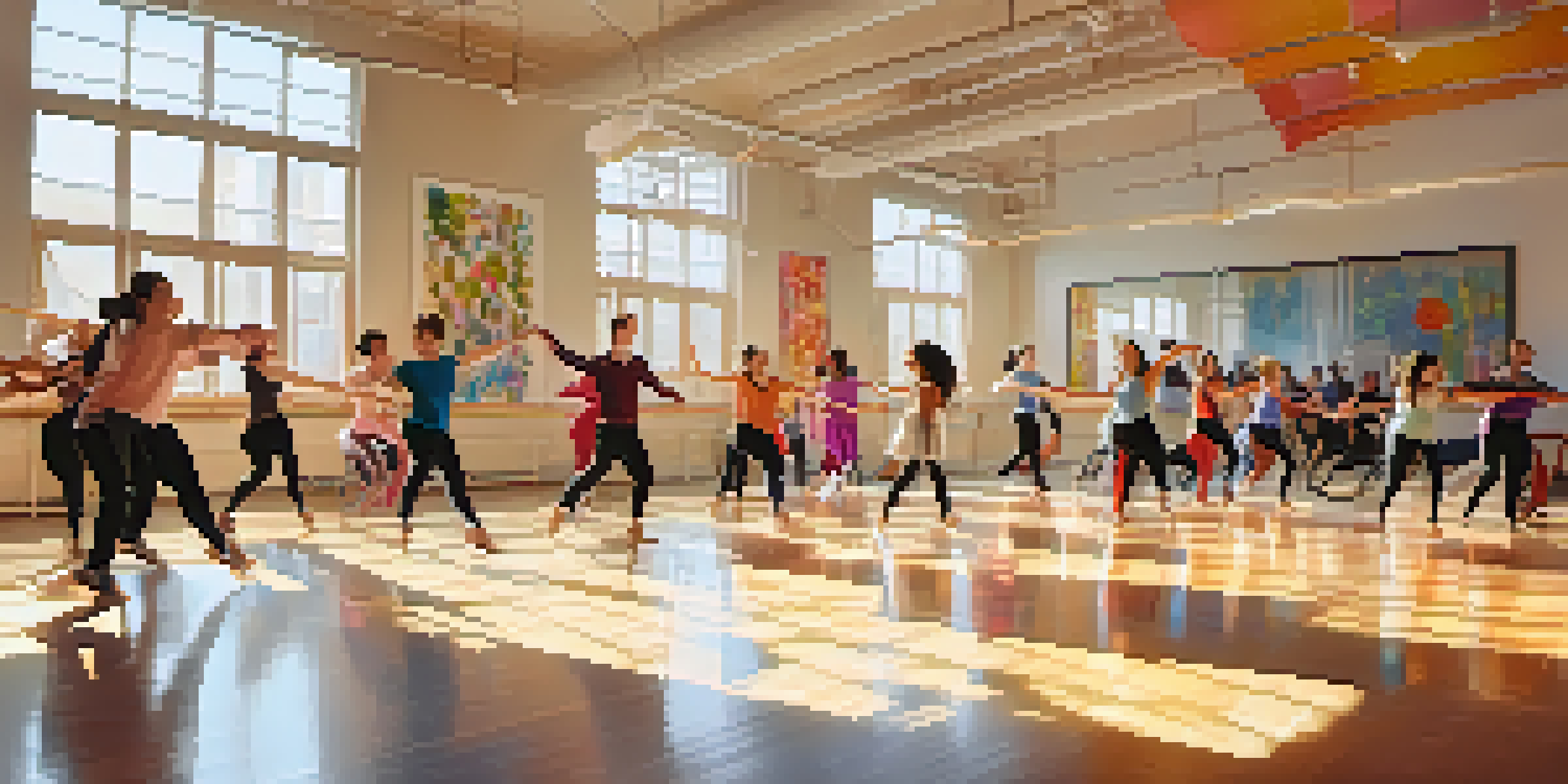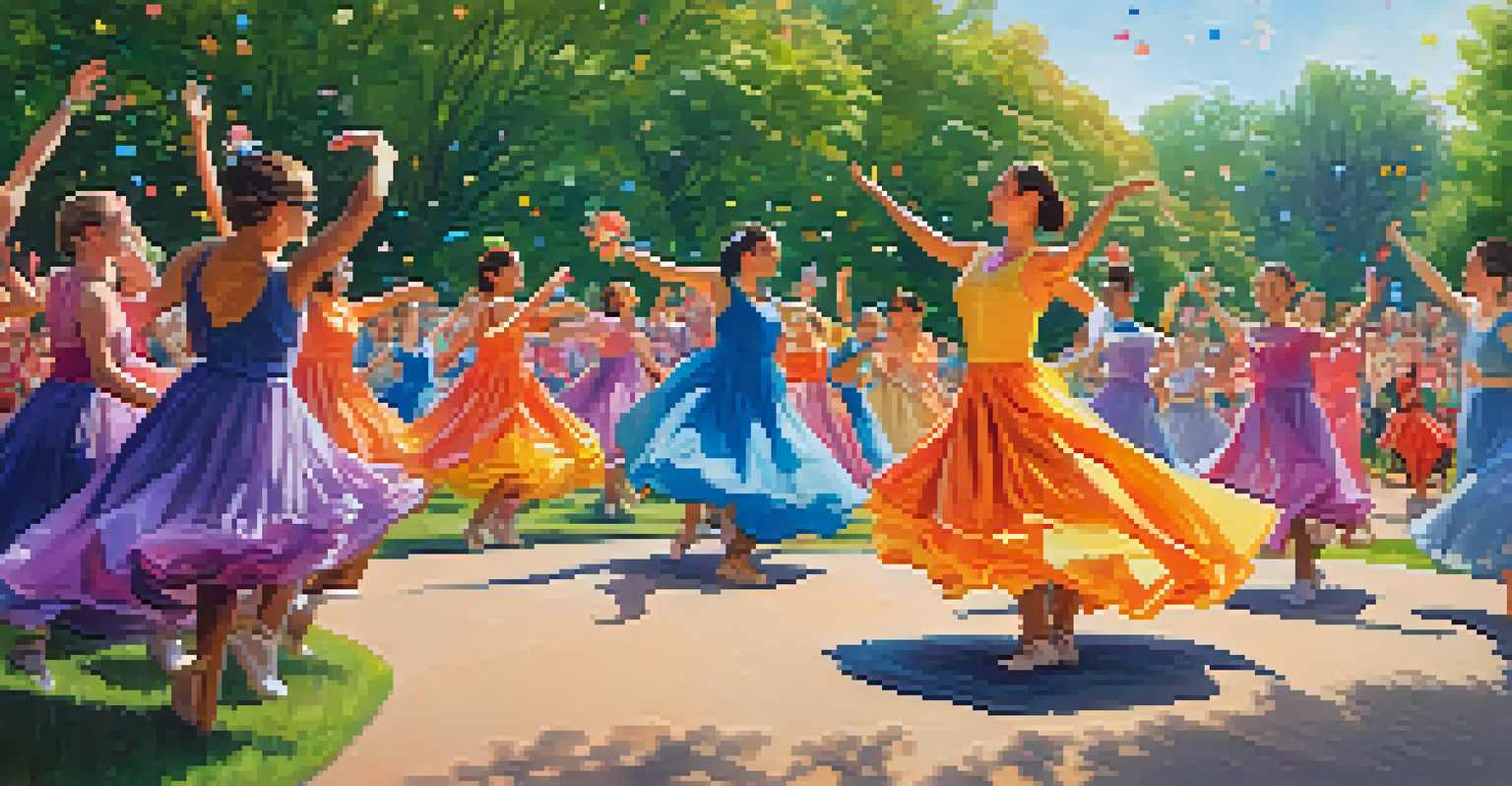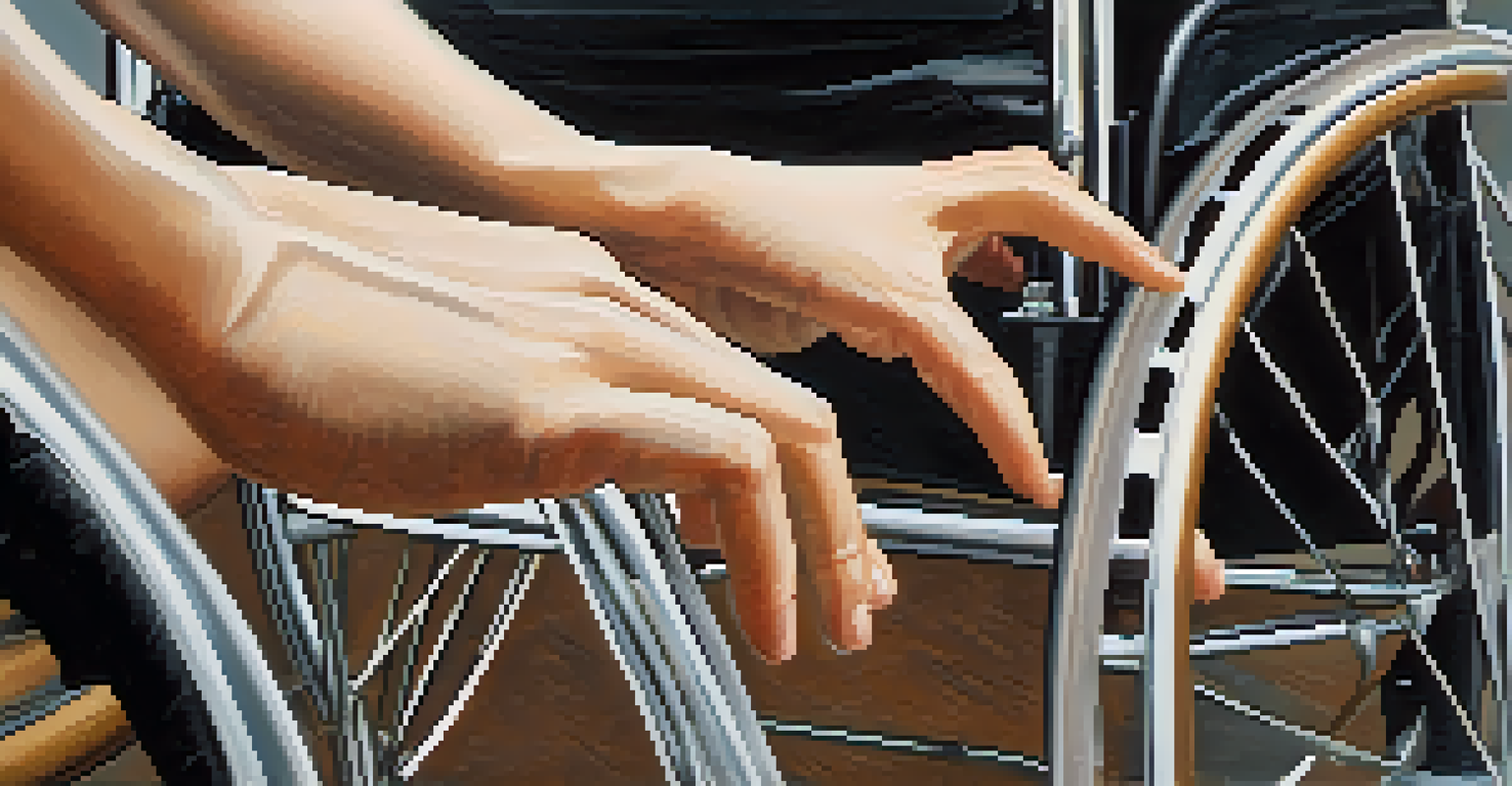Adaptive Dance: Merging Traditional Styles with New Needs

What is Adaptive Dance and Why It Matters
Adaptive dance is an innovative approach to dance that modifies traditional styles to accommodate individuals with varying abilities. It emphasizes inclusivity, allowing everyone to express themselves through movement, regardless of physical limitations. By adapting techniques and choreography, dancers can participate in a way that feels natural and fulfilling.
Dance is the hidden language of the soul.
This form of dance not only fosters creativity but also builds community among participants. For many, it provides a sense of belonging and acceptance that might be hard to find elsewhere. It encourages dancers to embrace their uniqueness and celebrate their own stories through movement.
Ultimately, adaptive dance is about more than just the physical act of dancing; it’s about empowerment and self-expression. It promotes a culture that values diversity and challenges the conventional boundaries of what dance can be. This inclusive approach opens doors for a wider audience to enjoy and participate in the art form.
The Intersection of Tradition and Innovation
At its core, adaptive dance merges traditional styles with modern needs, creating an exciting blend that respects the past while embracing the future. For instance, a ballet class might incorporate modified movements that allow individuals with mobility challenges to engage fully. This blending creates a rich tapestry of performance that honors the roots of dance.

Innovative adaptations can involve changes in choreography or the use of assistive devices, such as wheelchairs or crutches, which allow dancers to explore their physical capabilities. In this way, the traditional forms of ballet, jazz, or contemporary dance become more accessible to everyone. It’s a beautiful reminder that dance is for all bodies and all abilities.
Adaptive Dance Promotes Inclusivity
Adaptive dance modifies traditional styles to allow individuals of all abilities to express themselves through movement.
This intersection not only enhances the dance experience for participants but also enriches the artistry itself. By inviting diverse perspectives and experiences into traditional forms, adaptive dance challenges dancers and audiences alike to rethink their understanding of movement and expression.
Benefits of Adaptive Dance for Participants
Participating in adaptive dance offers numerous physical, emotional, and social benefits. Physically, it can improve strength, coordination, and flexibility, helping dancers develop a better connection with their bodies. These improvements can lead to increased confidence and a greater willingness to engage in various activities outside the dance studio.
Inclusion is not a matter of political correctness. It is the key to growth.
Emotionally, the joy of dancing can be incredibly therapeutic. Participants often report feeling more empowered and less isolated, as they connect with others who share similar experiences. This emotional boost can be crucial for individuals who may face daily challenges due to their disabilities.
Socially, adaptive dance fosters a sense of community, breaking down barriers and promoting friendships among diverse groups. As dancers work together, they cultivate mutual respect and understanding, ultimately enriching their lives and the lives of those around them. The friendships formed in these environments can last a lifetime.
Creative Approaches to Teaching Adaptive Dance
Teaching adaptive dance requires a flexible and creative approach, as each dancer's needs and abilities may vary widely. Instructors often adapt their teaching styles, using visual, auditory, and tactile cues to engage all learners. This personalized approach helps ensure that every participant feels included and valued.
Instructors may also use improvisation and collaborative choreography to encourage creativity and self-expression. This method allows dancers to explore their movements and find unique ways to interpret and respond to music. By focusing on individual strengths, teachers create an environment where everyone can shine.
Physical and Emotional Benefits
Participants in adaptive dance experience improved physical health, emotional empowerment, and build lasting social connections.
Moreover, ongoing training for instructors is essential to stay updated on new techniques and best practices in adaptive dance. This commitment to professional development not only enhances the quality of instruction but also ensures that the needs of all participants are met in an inclusive and respectful manner.
Adaptive Dance in Cultural Contexts
Adaptive dance is not just a contemporary phenomenon; it has roots in various cultural traditions worldwide. Many cultures have long embraced dance as a form of expression, and adaptive dance builds on these rich histories while making them accessible to all. This cultural context adds depth and meaning to the practice.
For example, traditional folk dances can be adapted to include movements that accommodate wheelchairs or other mobility aids, allowing dancers to participate fully. This integration not only respects the original dance form but also breathes new life into it, showcasing the versatility of cultural expressions.
By blending adaptive dance with cultural traditions, we can celebrate heritage while advocating for inclusivity. This fusion ensures that the joy of dance transcends boundaries, making it a universal language that everyone can speak, regardless of their abilities.
Challenges Faced in Adaptive Dance Initiatives
Despite its many benefits, adaptive dance initiatives can face several challenges. Funding and resources are often limited, making it difficult for organizations to offer consistent programs. Many dance studios may lack the necessary equipment or trained instructors to accommodate diverse needs, which can hinder participation.
Additionally, awareness and understanding of adaptive dance can be limited in some communities. This lack of visibility may prevent potential participants from discovering these inclusive opportunities. It’s crucial to promote the benefits and importance of adaptive dance to encourage broader participation and support.
Future of Dance is Inclusive
The growing movement towards adaptive dance highlights the importance of accessibility and inclusivity in the arts.
Lastly, misconceptions about disabilities can create barriers. Education and advocacy are essential to dispel myths and promote a more inclusive perspective on dance. By addressing these challenges head-on, we can create a more supportive environment for adaptive dance initiatives to thrive.
The Future of Adaptive Dance: A Growing Movement
The future of adaptive dance is bright, with a growing movement that emphasizes inclusivity and accessibility in the arts. As more organizations and studios recognize the importance of adaptive dance, we can expect to see an increase in programs and opportunities for diverse dancers. This momentum is vital for changing perceptions and breaking down barriers.
Innovative technologies, such as virtual reality and online classes, are also expanding access to dance education for individuals who may face geographic or physical limitations. This evolution opens doors for more people to participate in adaptive dance, broadening the community and enriching the art form.

As we continue to advocate for adaptive dance, we can create a world where everyone has the opportunity to express themselves through movement. By fostering inclusivity, we not only celebrate diversity in dance but also cultivate a culture of acceptance and understanding that can extend far beyond the dance floor.